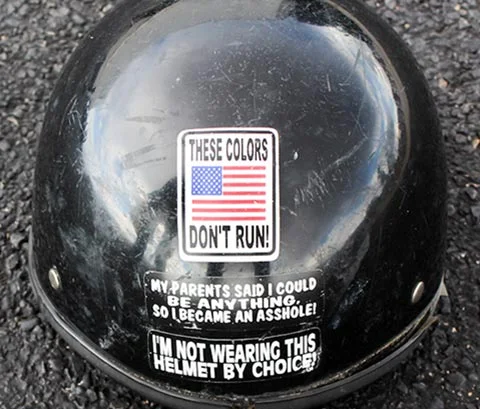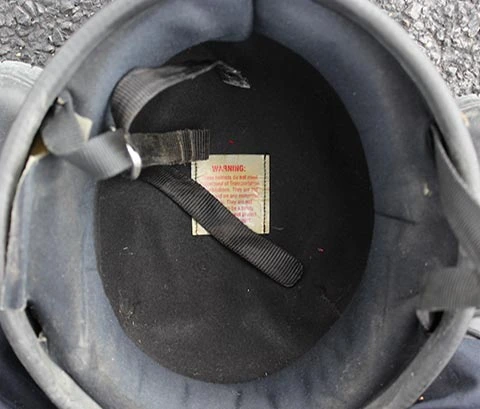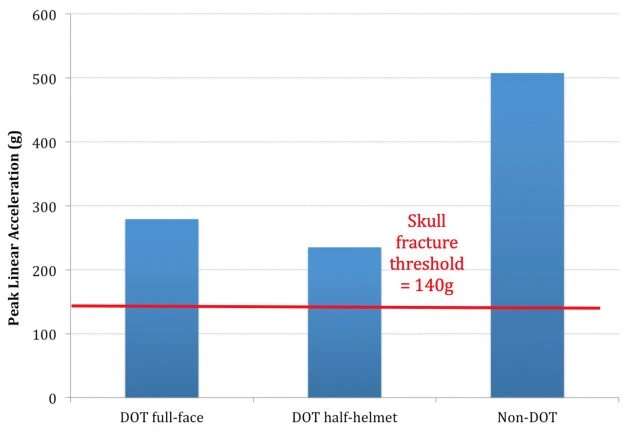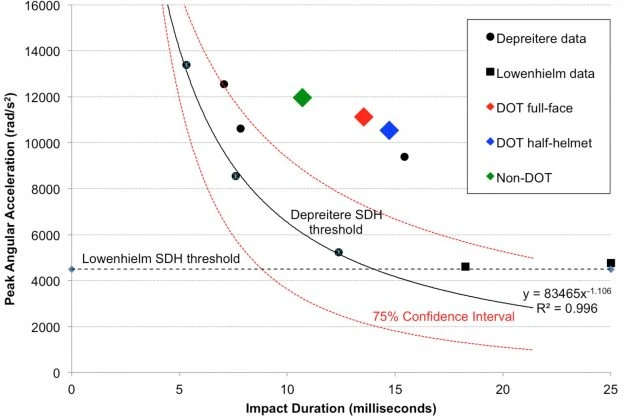Motorcycle helmets were originally developed in the early 20th century and, like most helmets, are modeled after military helmets, the purpose of which is to protect against penetrating head injury. The modern motorcycle helmet, with a hard outer shell and rigid expanded polystyrene (EPS) liner was actually introduced over 60 years ago. The outer shell serves as a second skull, dispersing the impact force over a wider surface area, while the inner shell compresses in an attempt to reduce translational forces. A mechanism to mitigate tangential forces is absent. Since the liner fills the entire inner surface of the shell, tangential forces cannot be absorbed and are transmitted directly to the head and brain. Motorcycle helmet standards focus on reducing the effect of linear impact forces by dropping them from a given height onto an anvil and measuring the resultant peak linear acceleration.
Motorcycle Helmet Standards
In motorcycle helmet testing, the risk of impact loading injuries, such as skull fractures, can be determined by measuring linear accelerations experienced by a surrogate head form in response to impact. Whereas risk of impulse or inertial loading injuries, such as concussion, axonal injury and subdural hematoma can be quantified by measuring impact-related angular accelerations at the center of mass of a test head form.
Unfortunately, the evolution of motorcycle helmet design is not driven by advances in scientific knowledge, but rather by the need to meet applicable testing standards. In the United States, standards include the federal motor vehicle safety standard (FMVSS) #218, commonly known as the DOT motorcycle helmet testing standards, and Snell M2015, while ECE 22.05 and BSI 6658 were adopted in European countries. Test procedures involve dropping a helmeted head form onto various steel anvils at impact velocities ranging from only 5.0 to 7.75 m/s (11-17 mph). Pass/fail is based on the ability of the helmet to provide protection against forces associated with linear acceleration in response to impact.
Current motorcycle helmet testing standards do not incorporate measures of angular acceleration and therefore fail to assess whether helmets offer protection against catastrophic brain injuries. The omission of this critical measure is reflected epidemiologically in the disproportion of closed head injuries in fatal motorcycle accidents.





